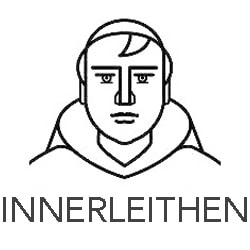Innerleithen
- St. Ronan's Wells
Map | Website
Established in the 1820s on the site of a natural spring, St. Ronan's Wells flourished throughout the nineteenth century and was expanded in 1896 to make space for indoor bathing and spring water bottling facilities. A visitor centre now offers details on the illustrious history of the spa, including the role played by Sir Walter Scott in helping it become a tourist hotspot during the Victorian era.
- Robert Smail's Printing Works
Map | Website
A letterpress printing office established in 1866, Robert Smail's has been continuously operational for more than 150 years. Visitors today can see the letterpress machinery in use, some of it dating to the founding of the business, and get hands-on in the case room.
- The Runic Cross
Map
Located on the premises of Innerleithen Church, the Runic Cross was carved from stone during the medieval period and later discovered on the slopes of the Leithen Valley.
- The Cuddy Brig and Jenny's Well
Map
The Cuddy Brig is a beautiful stone arch across the Leithen Water, built in 1701 to connect Leithen Road with the woodland on Pirn Hill. A few steps away from the bridge is Jenny's Well, the site of a freshwater spring named in honour of Jenny Baptie, who sold homemade sweets from a nearby cottage in the late 1800s and up to 1915.
- Pirn Hill Sculpture Circle
Map
On the site of the Iron Age-era Pirn Hill Fort, seven sandstone carvings by Innerleithen sculptor Mary Kenny illustrate the history of the region from the Palaeolithic to the present.
- The Cauld and the Mill Lade
Map
Now a reminder of Innerleithen's industrial history, the Cauld is a weir that once helped to power the local mills. It connects to the Mill Lade, an artificial stream known locally as the Dam, which you can follow through the centre of town to the foot of the Leithen Water.
- The Cheese Well and Wallace's Ditch
Map
At the edge of the Minch Moor outside Innerleithen, the Cheese Well marks the site of a freshwater spring along the old drovers' road between Innerleithen and Selkirk. It dates back about 400 years and is thought to have been a place where travellers would leave gifts of cheese to placate the resident fairies. A commemorative stone now marks the spot. Nearby is an earthwork known as Wallace's Ditch, which may or may not have played a role in William Wallace's flight from southern Scotland into Northumberland in 1297.
- The Piper's Grave
Map
Local folklore tells us that sometime in the eighteenth century, a wandering piper made a wager with residents of the Leithen Valley: he bet them that he could walk the thirty miles to Edinburgh while playing his pipes continuously and never repeating a tune. A headstone alongside the B709 now marks the spot where he is believed to have expired.
Traquair
- Traquair House and Gardens
Map | Website | Facebook
Once a hiding place for Mary Queen of Scots, Traquair House is Scotland's oldest inhabited estate property. Dating back to 1107, it has been continuously owned by the Stuart family -- kin to Bonnie Prince Charlie -- and has been visited by twenty-seven kings and queens of Scotland. Today, it offers a taste of Scottish history on picturesque grounds that include farm animals and a maze. It also hosts regular events throughout the year.
The Glen
Innerleithen.org.uk
Website maintained by Innerleithen and District Community Council.
